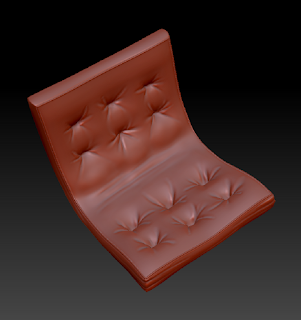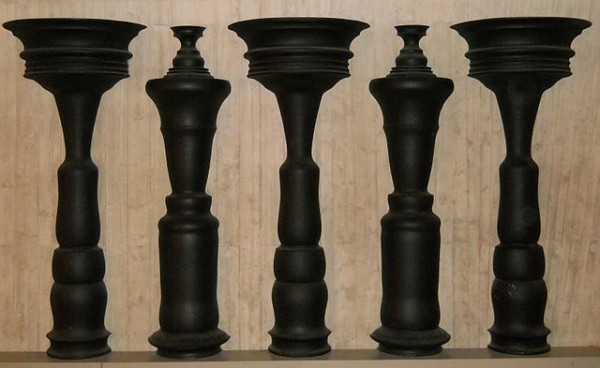Many items of furniture and props populate the asylum corridor and Doctor's office. These help ground the scene in a time, style, mood and scale.
Modelling techniques varied according to the task at hand.
 |
| Studded cushion in ZBrush |
This studded cushion was created through simple extrusion techniques before being subdivided and brought into ZBrush for sculpted detailing. This detail was projected onto the base mesh as a normal map and an orange tweed diffuse map would complete the look.
 |
| Doctor's office - Back-lit sign |
This sign was created using simple box modelling and extrusion techniques. An emission map was employed to approximate the effect of a semi-opaque, back-lit sign. The diffuse map is combined with a subtle bump to represent dirt and the thickness of the painted text.
 |
1950 Zenith round-screen television
www.ebay.com/itm/1950-Zenith-Tyler-12-round-screen-TV-/182543473460 |
 |
| Cell numbers - Antique screens |
These signs mark each cell door along the corridor. They are inspired by antique, 1950's television screens. The screen image has scan lines and a fuzzy glow created by a combination of diffuse and emission maps.
 |
| Doctor's office furniture and props |
These items mark the beginning of office prop production. All office furniture is based on period or reproduction mid-century modern items.
Scale (both absolute and comparative) will be an important factor in maintaining credibility. Macro and micro detail in combination with believable shaders will assist in this with a variety of construction materials (plastic, wood, glass, metal, painted, bare, worn, eroded) displaying distinct characteristics.















